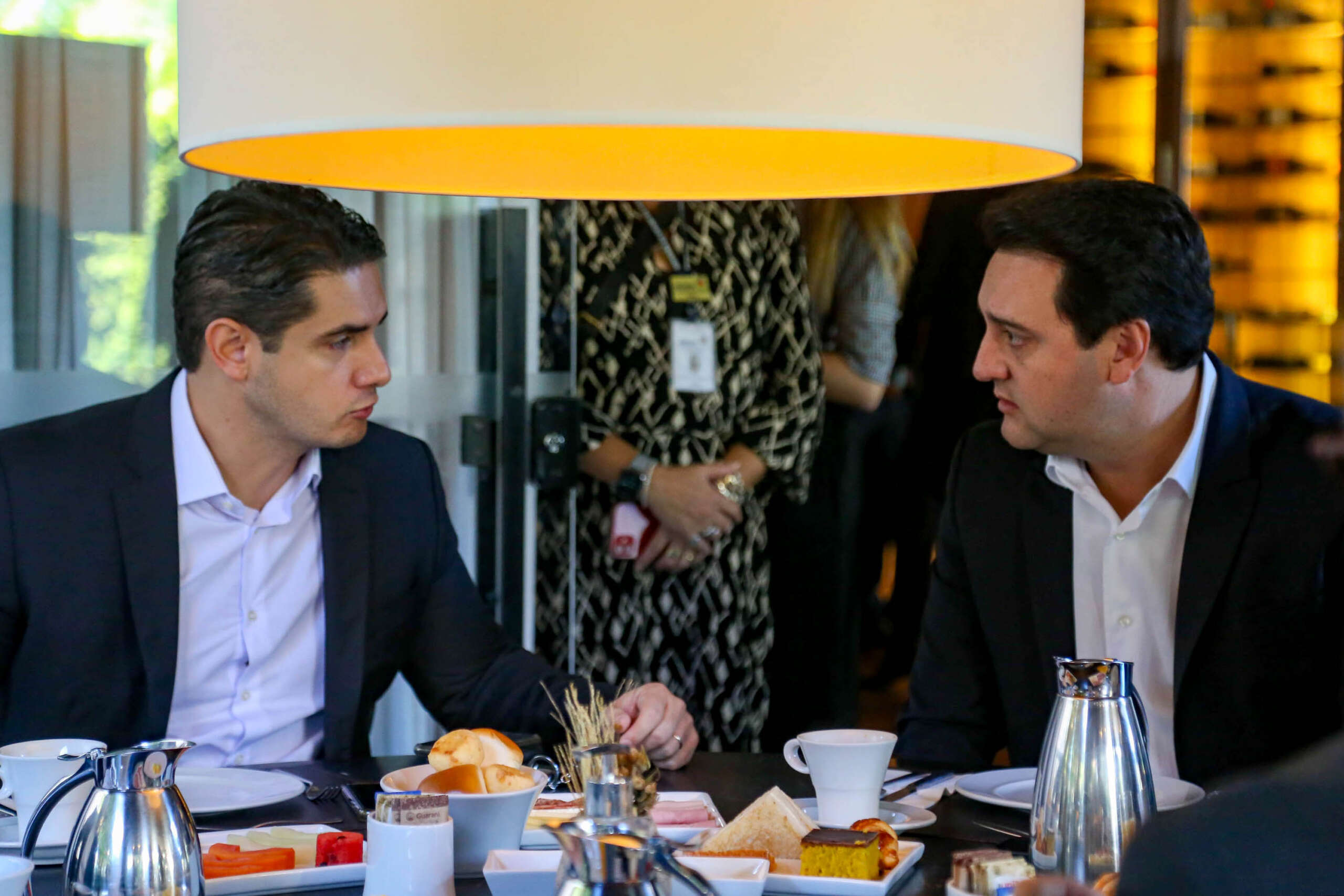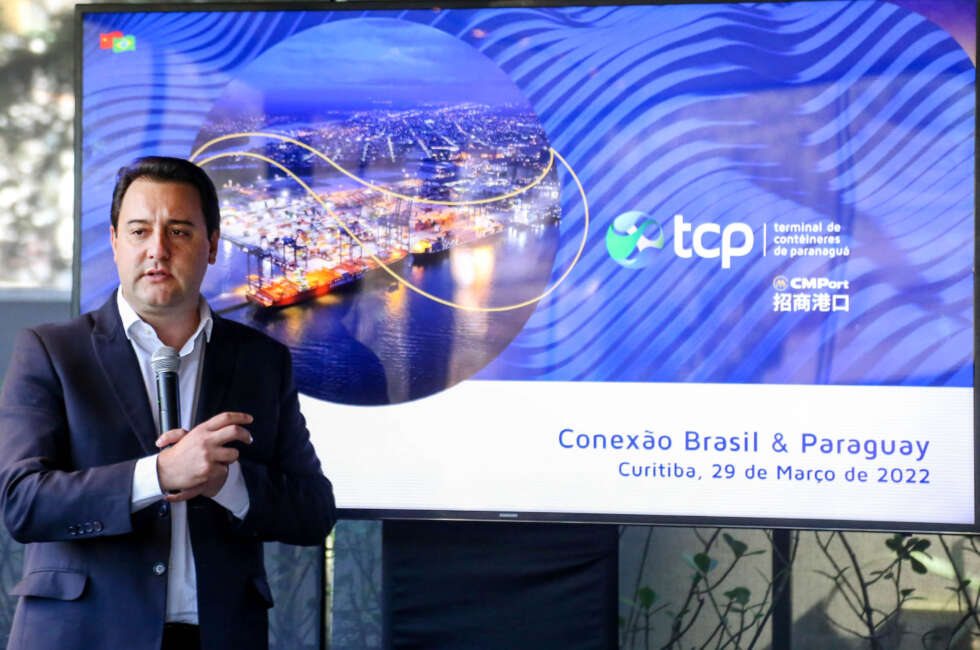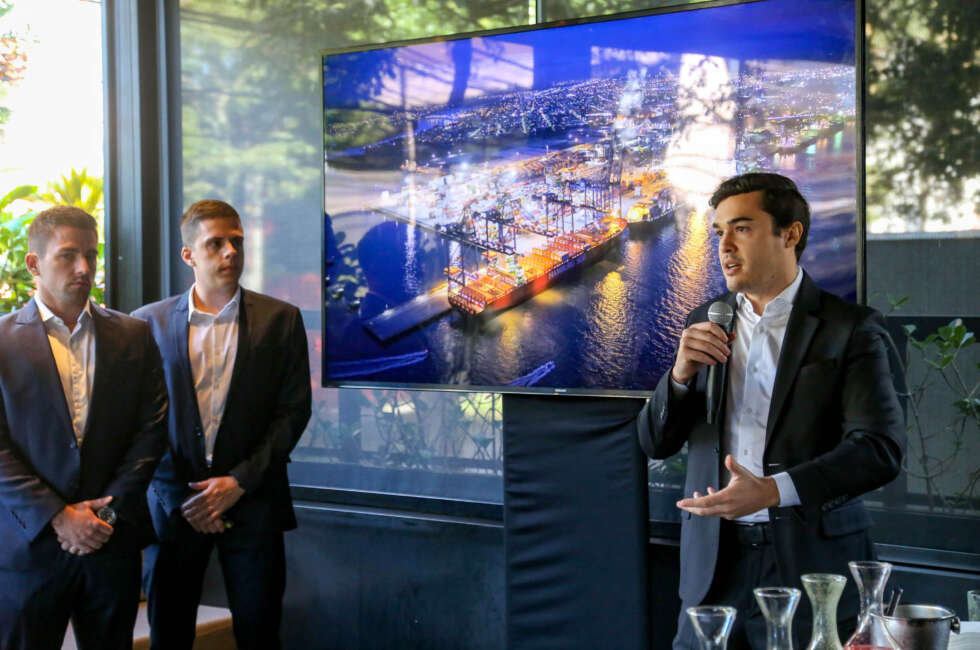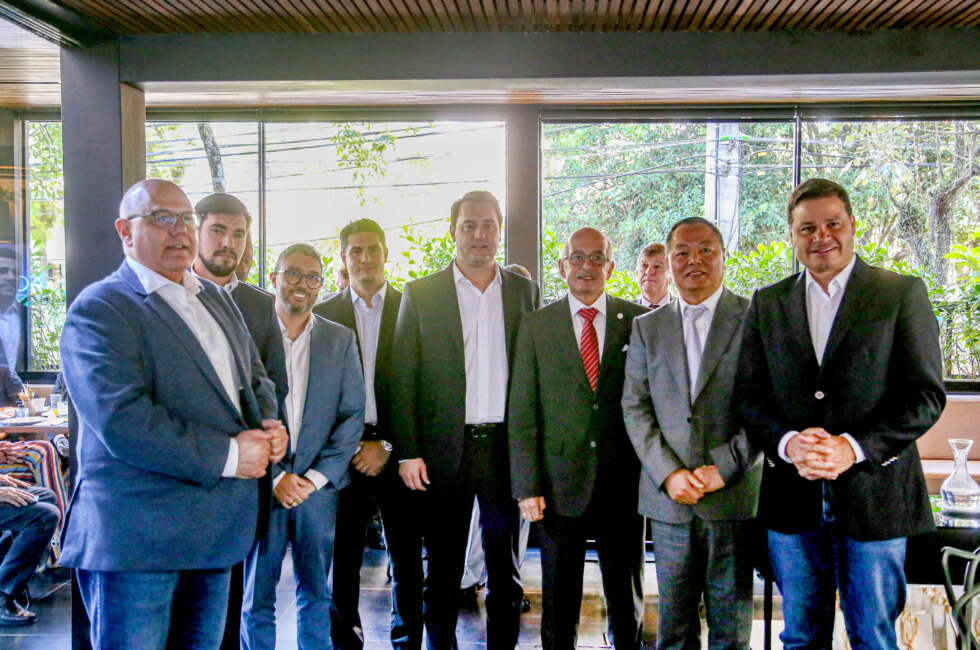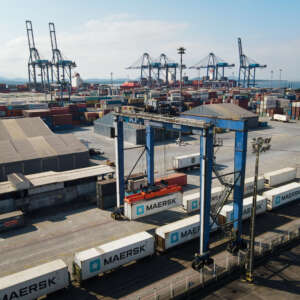Ratinho Junior said that the terminal is one of the main entry and exit doors for products to the neighboring country. Projects such as the New Ferroeste, the highway concessions program, the Brazil-Paraguay Integration Bridge, and improvements at the Port position Paraná as the Logistics Hub of South America.
The State Government and private institutions such as the Container Terminal of Paranaguá (TCP) study the expansion of imports and exports from Paraguay through the Port of Paranaguá. The governor Carlos Massa Ratinho Junior reinforced on Tuesday (29), in an event promoted by TCP, a greater logistics integration between Paraná and the neighboring country, in view of the ongoing projects in the state for the modernization of infrastructure modals.
Historically used as the main access route for Paraguayan foreign trade, the port lost protagonism in 2003, when the State’s blockade of transgenic products made the country develop a system of waterways on the Paraguay and Paraná rivers, draining a good part of the products through ports in Argentina and Uruguay.
Agora, com projetos como a Nova Ferroeste, o novo programa de concessões rodoviárias, a Ponte de Integração Brasil-Paraguai e os investimentos no Porto de Paranaguá, o Estado tem a oportunidade de se tornar novamente a principal porta de entrada e de saída do Paraguai para o mar.
“Estamos à disposição para construir projetos com o setor produtivo paraguaio para atender a logística do País”, disse o governador. “O Paraná cometeu no passado um erro grave, ideológico, que prejudicou as duas localidades. Estamos com a missão de fazer um resgate histórico dessa parceria, que por anos foi muito importante. Temos plena capacidade de ampliar ainda mais essa integração”, afirmou Ratinho Junior.
“We have worked for a long time, since the 1980s, with the Port of Paranaguá. Unfortunately, some political decisions have caused Paraguayan cargo to seek other corridors. We are very interested in having greater logistics through the Port of Paranaguá, which reduces time and costs,” pointed out Juan Carlos Munhoz, director general of the National Administration of Navigation and Ports (ANNP), the Paraguayan government’s autarchy for the operation of port services.
According to Munhoz, Paraguay moved 165 thousand TEUs (unit of measure for a 20-foot container) last year, with an increasing volume through the Port of Paranaguá. “It is a market with great potential, so it is important to enhance regional integration and explore the logistical advantages of Paranaguá. The reduction of logistics costs makes this a route of interest for Paraguay,” he said.
TCP’s Commercial and Institutional Director, Thomas Lima, explained that the company directed its efforts to reconquer this market, since trade via the Port of Paranaguá reduces the transportation time of Paraguayan products by 25 days, besides being one of the only port terminals in Brazil to have the presence of the Paraguayan Free Deposit, a necessary requirement for international transport of imported cargoes destined for the neighboring country.
“Our logistical axis could be much more exploited than it is today, which would generate a very interesting competitiveness for Paraguayan companies, in addition to gains for Paraná,” said Lima. “That’s why we want to show the Paraguayan authorities that it is necessary to manage this competition, to improve Paranaguá’s rates to expand the movement here, which is much faster than through the other countries.”
INFRAESTRUCTURE – Ratinho Junior said that the infrastructure projects will consolidate Paraná as the main logistics hub of South America, given the strategic position of the state on the map, which is in the center of 70% of the region’s consumer market. “We are the connection of the South with the Southeast and we are in the center of the production of South America’s GDP, very close to Paraguay, Argentina and Uruguay, a very strategic geographic positioning,” he said.
Among the initiatives presented by the governor, the main highlight is the Nova Ferroeste, a railroad that will connect Maracaju (MS) to Paranaguá Port. Serão 1.300 quilômetros de extensão, incluindo um ramal entre Foz de Iguaçu e Cascavel que será construído justamente para absorver a produção paraguaia. The route should also pass through Guaíra, another Paraná city that borders the country.
According to the railroad’s feasibility study, the forecast is that this branch line alone will handle 3.2 million tons of products in the first year of operation and up to 4.1 million tons in 30 years. In the entire railroad project, the planned investment is R$29.4 billion, with the movement of 38 million tons of products already in the first year of full operation, which will make the New Ferroeste the second largest export corridor for grains and animal protein in Brazil.
“The New Raileste will allow Paranaguá to become the main port of Paraguay, with the reduction of logistics costs and loading time. The transportation they do today, by waterways, adds 30 days to the transportation time to China, double what it would be with the railroad,” explained Luiz Fagundes, coordinator of the Paraná State Railroad Plan. “Besides this, it reduces logistical insecurity, since the reduction in the water level of the rivers prevents navigation. The railroad brings balance, security, cost reduction and time in the country’s logistics matrix.
The new highway concession program in Paraná, which will include 3,300 kilometers of state and federal highways, is also expected to go up for auction later this year on the Stock Exchange. The forecast is R$ 44 billion in investments in works, including 1.7 thousand kilometers of duplication.
The Port of Paranaguá, considered for two consecutive years as the terminal with the best port management in the country, foresees private investments of R$2.6 billion in the coming years with the leasing of new areas.
In addition, the state government is investing R$500 million to increase rail transport capacity at the East Quay, in the project known as Moegão. The bidding process should be completed in May, and the construction work will start soon thereafter. The exclusive hopper for loading and unloading trains will receive up to 180 wagons simultaneously, with three independent lines and conveyor belts connecting 11 terminals.
PRESENCES – The meeting was attended by the State Secretary of Infrastructure and Logistics, Sandro Alex; the President of Portos do Paraná, Luiz Fernando Garcia; the President of TCP, Tony Shi; the CEOs of Ferroes, André Gonçalves; of Invest Paraná, Eduardo Bekin; the director of Institutional and International Relations of Invest Paraná, Giancarlo Rocco; the general delegate of ANNP, Belarmino Duarte; the delegate of ANNP, José Rojas; the Administrative director of Itaipu Binacional, Paulo Roberto da Silva Xavier; among other authorities.
Source: Paraná State Government

